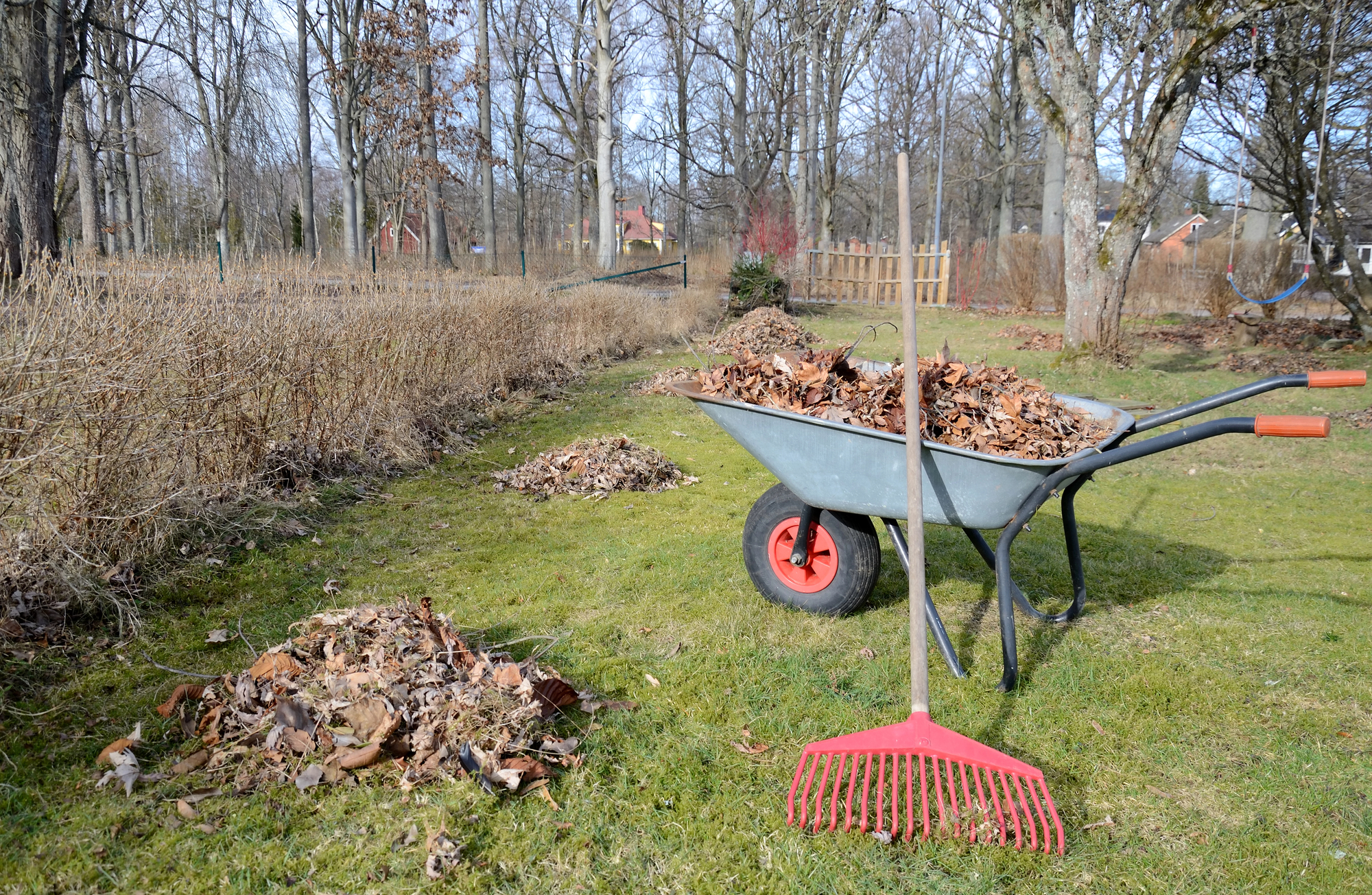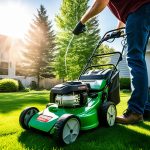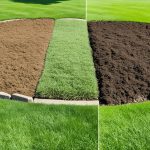As winter fades and spring approaches, many homeowners overlook the importance of clearing lawn debris. Yet this simple task can significantly impact the health and appearance of your grass in the coming months. Removing fallen leaves, twigs, and other organic matter prevents suffocation of grass blades and allows sunlight to reach the soil, promoting new growth.
Winter cleanup is more than just aesthetics. It helps prevent fungal diseases that thrive in damp, decaying matter. By clearing away debris, you’re creating an environment where beneficial microorganisms can flourish, enhancing soil health and nutrient availability for your lawn.
Taking action before the first frost is ideal, but early spring cleanup is still beneficial. This process sets the stage for essential lawn care practices like aeration, overseeding, and fertilization. A clean lawn allows these treatments to be more effective, giving your grass the best chance to thrive as temperatures rise.
Key Takeaways
- Winter debris removal prevents grass suffocation and promotes new growth
- Cleanup reduces the risk of fungal diseases and improves soil health
- Early action prepares the lawn for effective spring care treatments
The Importance of Debris Removal for Lawn Health
Clearing winter debris from your lawn is essential for maintaining a healthy, vibrant yard. Proper removal of leaves, sticks, and other organic matter sets the stage for strong growth and resilience in the coming spring season.
Preventing Snow Mold and Other Diseases
Removing debris helps prevent snow mold and other fungal issues. When leaves and other materials are left on the grass, they trap moisture and create an ideal environment for harmful organisms to thrive. This can lead to bare patches and weakened turf come springtime.
Regular cleanup reduces the risk of disease spread. By eliminating potential hiding spots for pathogens, you minimize the chances of infection taking hold in your lawn. This proactive approach is especially important in areas with heavy snowfall or prolonged wet conditions.
Debris removal also improves air circulation to the grass blades and soil surface. Better airflow helps dry out excess moisture, further reducing the likelihood of fungal growth and other moisture-related problems.
Ensuring Strong Root Development
A clean lawn surface promotes stronger root growth. When debris is cleared away, grass roots have better access to sunlight, air, and nutrients. This encourages deeper, more extensive root systems that can better withstand stress from drought, heat, and foot traffic.
Removing heavy layers of leaves and other materials prevents smothering of the grass. Unobstructed access to light and air allows the grass to continue photosynthesis and respiration, even during dormant periods. This maintains the plant’s energy reserves for robust spring growth.
Clear lawns also warm up faster in spring. Earlier soil warming leads to quicker green-up and a longer growing season for your grass, resulting in a thicker, healthier lawn.
Maintaining Soil Health
Debris removal supports good soil structure and composition. While some organic matter is beneficial, excessive buildup can lead to imbalances in soil pH and nutrient levels. Regular cleanup helps maintain optimal soil conditions for grass growth.
Clearing debris prevents soil compaction. Heavy layers of wet leaves and other materials can compress the soil, reducing pore space and limiting water and nutrient movement. This can suffocate grass roots and impede healthy lawn development.
Proper debris management also helps control thatch buildup. While a thin layer of thatch is normal, excessive accumulation can prevent water and nutrients from reaching the soil. Removing debris regularly keeps thatch at manageable levels, promoting better soil-to-grass contact and improved nutrient uptake.
The Fundamentals of Winter Cleanup
Winter cleanup lays the groundwork for a healthy spring lawn. Removing leaves and dead plant material prevents smothering and disease, while proper pruning encourages robust new growth when warmer weather returns.
Proper Techniques for Raking and Mulching Leaves
Raking is essential for removing thick leaf layers that can suffocate grass. Use a sturdy rake with flexible tines to avoid damaging turf. Work in sections, raking leaves into piles for easy collection. For light leaf coverage, consider mulching instead.
Mulching chops leaves into small pieces that decompose quickly, adding nutrients to the soil. Use a mulching mower or attach a mulching blade to your regular mower. Make multiple passes to break down leaves thoroughly.
Don’t rake or mulch when the lawn is wet or frozen, as this can harm grass roots. If frost arrives before you finish, wait until spring to complete the cleanup.
Pruning to Promote Spring Growth
Winter pruning removes dead or diseased branches, improves plant shape, and stimulates new growth. Focus on deciduous trees and shrubs after they’ve gone dormant. Use clean, sharp tools to make clean cuts at a 45-degree angle just above a bud.
Remove any crossing or rubbing branches to improve air circulation. Cut back ornamental grasses to 4-6 inches tall. Trim perennials to 2-3 inches above ground level after the first hard frost.
Avoid pruning spring-flowering shrubs like lilacs or forsythia in winter, as this removes flower buds. Instead, prune these immediately after they finish blooming in spring.
Optimizing Your Lawn for Spring
Proper lawn care in spring sets the foundation for healthy grass growth throughout the year. Two key strategies can significantly improve your lawn’s health and appearance.
Aeration and Overseeding Strategies
Aeration involves creating small holes in the soil to allow air, water, and nutrients to penetrate the grass roots. This process helps reduce soil compaction and promotes stronger root growth. The best time to aerate is during the growing season when the grass can heal and fill in open areas.
For cool-season grasses, aerate in early spring or fall. Warm-season grasses benefit from aeration in late spring or early summer. After aerating, overseed the lawn to fill in bare or thin spots. Choose grass seeds that match your existing turf or are well-suited to your climate.
Water the newly seeded areas lightly and frequently until the grass establishes. Keep foot traffic to a minimum during this time to allow seeds to germinate and take root.
Applying the Right Fertilizer
Fertilizing provides essential nutrients for grass growth and helps create a lush, green lawn. Before applying fertilizer, test your soil to determine its nutrient content and pH level. This information guides you in selecting the right fertilizer blend.
Spring fertilization should focus on promoting root growth rather than top growth. Use a slow-release fertilizer with a higher ratio of phosphorus and potassium to nitrogen. Apply the fertilizer evenly across the lawn using a spreader for consistent coverage.
Water the lawn thoroughly after fertilizing to help the nutrients soak into the soil. Avoid over-fertilizing, as this can lead to rapid grass growth, increased mowing needs, and potential nutrient runoff. Follow the product instructions for application rates and timing to prevent damage to your lawn.
Essential Spring Lawn Care Practices
Spring lawn care sets the foundation for a healthy, vibrant yard throughout the growing season. Proper weed management, thatch control, mowing techniques, and watering practices are key to achieving a lush, green lawn.
Weed Control and Use of Pre-emergent Herbicide
Effective weed control starts with applying pre-emergent herbicides in early spring. These products create a barrier in the soil that prevents weed seeds from germinating. Timing is critical – apply before soil temperatures reach 55°F (13°C) for optimal results.
For existing weeds, spot-treat with selective post-emergent herbicides. Choose products specifically formulated for your grass type and the weeds you’re targeting. Always follow label instructions carefully.
Consider organic alternatives like corn gluten meal for natural weed suppression. Hand-pulling is also effective for small weed patches.
Thatch Control and Mowing Guidelines
Thatch, the layer of dead grass between soil and living grass, can hinder lawn health if it becomes too thick. Remove excess thatch using a power rake or dethatching machine when it exceeds 1/2 inch (1.3 cm).
Set mower blades to the proper height for your grass type:
- Cool-season grasses: 2.5-3.5 inches (6.4-8.9 cm)
- Warm-season grasses: 1-2 inches (2.5-5.1 cm)
Mow frequently, removing no more than 1/3 of the grass blade length at a time. This promotes strong root development and helps crowd out weeds.
Watering Routines and Monitoring Lawn Health
Establish a consistent watering schedule as temperatures rise. Water deeply and infrequently to encourage deep root growth. Aim for 1-1.5 inches (2.5-3.8 cm) of water per week, including rainfall.
Water in the early morning to reduce evaporation and fungal growth. Use a rain gauge or moisture meter to track water levels and adjust as needed.
Monitor your lawn regularly for signs of stress or disease. Look for discoloration, bare patches, or unusual growth patterns. Address issues promptly to maintain overall lawn health and curb appeal.
Lawn Repair and Maintenance Tips
Proper lawn repair and maintenance after winter damage is essential for a healthy spring lawn. Addressing common issues like bare spots, soil compaction, and fungal diseases helps promote robust grass growth.
Fixing Bare Spots and Addressing Compaction
Bare spots in lawns often result from winter damage or heavy foot traffic. To repair these areas, start by loosening the soil surface with a rake. Spread grass seed evenly over the bare spots and lightly rake it into the soil. Water the seeded areas regularly to keep the soil moist until germination occurs.
Compacted soil can hinder grass growth and root development. Aerate your lawn in early spring using a core aerator to remove small plugs of soil. This process improves air, water, and nutrient penetration. After aerating, apply a thin layer of compost to enhance soil structure and fertility.
Dealing with Brown Patch and Fungal Issues
Brown patch is a common fungal disease that can affect lawns, especially in humid conditions. Identify brown patch by circular patches of dead grass with darker rings around the edges. To address this issue, improve air circulation by pruning nearby trees and shrubs.
Reduce nitrogen fertilizer applications, as excess nitrogen can promote fungal growth. Water your lawn deeply but infrequently to avoid prolonged leaf wetness. If the problem persists, consider applying a fungicide specifically designed for brown patch control.





